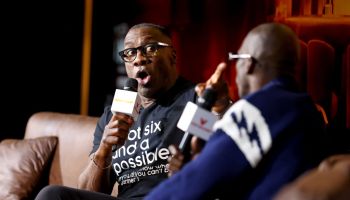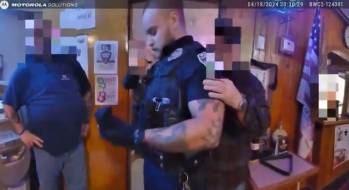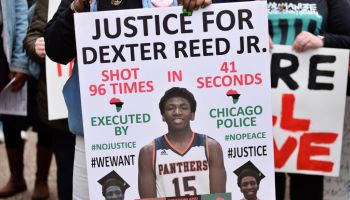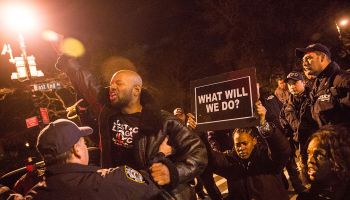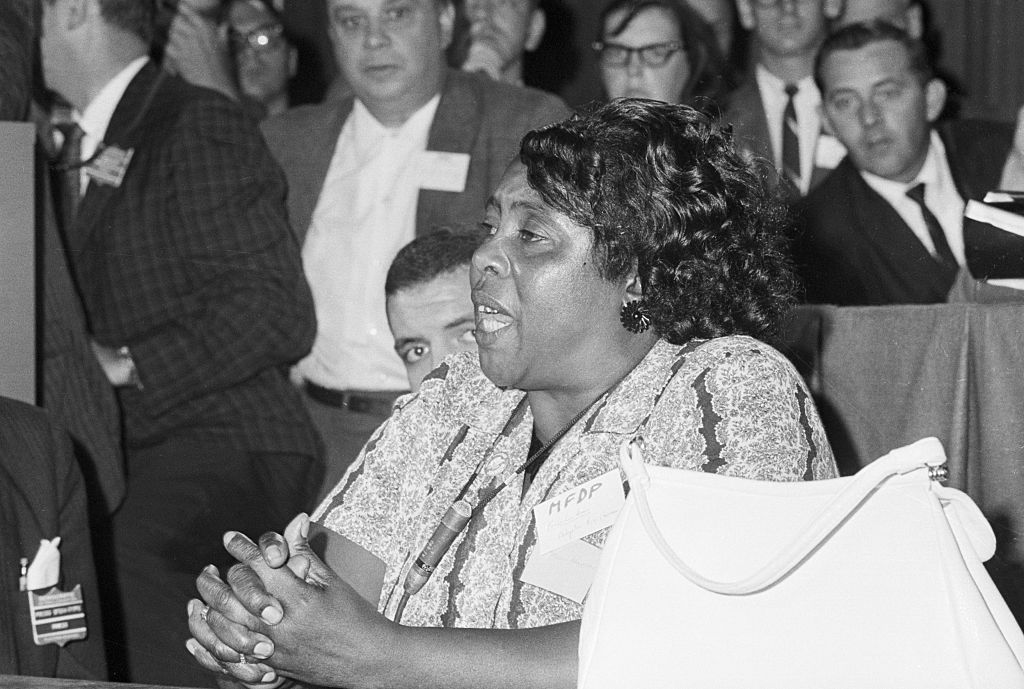
Mississippi Freedom Democratic Party delegate Fanny Hamer speaks out for the meeting of her delegates at a credential meeting before the formal meeting of the Democratic National Convention on Aug. 22, 1964, in Atlantic City, New Jersey. | Source: Bettmann / Getty
It wasn’t called voter suppression back then, but civil rights activist Fannie Lou Hamer knew exactly how white authorities in Mississippi felt about Black people voting in the 1960s.
At a rally with Malcolm X in Harlem, New York, on Dec. 20, 1964, Hamer described the brutal beatings she and other Black people endured in Mississippi in their fight for civil and voting rights.
A year earlier, in June 1963, Hamer and several of her friends attended a voter education training workshop in Charleston, South Carolina. On their way back to Mississippi, the bus driver called the police to remove Hamer and her colleagues from the whites-only section of the bus where they had been sitting.
When they stopped in Winona, Mississippi, local police were waiting and promptly arrested them for disorderly conduct.
While in jail, Hamer told the Harlem rally, “I began to hear the sounds of licks and I began to hear screams. I couldn’t see the people, but I could hear them. … They would call her awful names. And I would hear when she would hit the floor again.”
After a while, Hamer said, she saw a friend pass her cell.
“Her clothes had been ripped off from the shoulder down to the waist,” Hamer said. “Her hair was standing up on her head. Her mouth was swollen and bleeding. And one of her eyes looked like blood. … And then three men came to my cell.”
Hamer was beaten, too, and sustained injuries that left her with lifelong injuries to her eyes, kidneys and legs. The experience also left her with little choice but to fight back. And fight she did, until her death at the age of 59 on March 14, 1977.
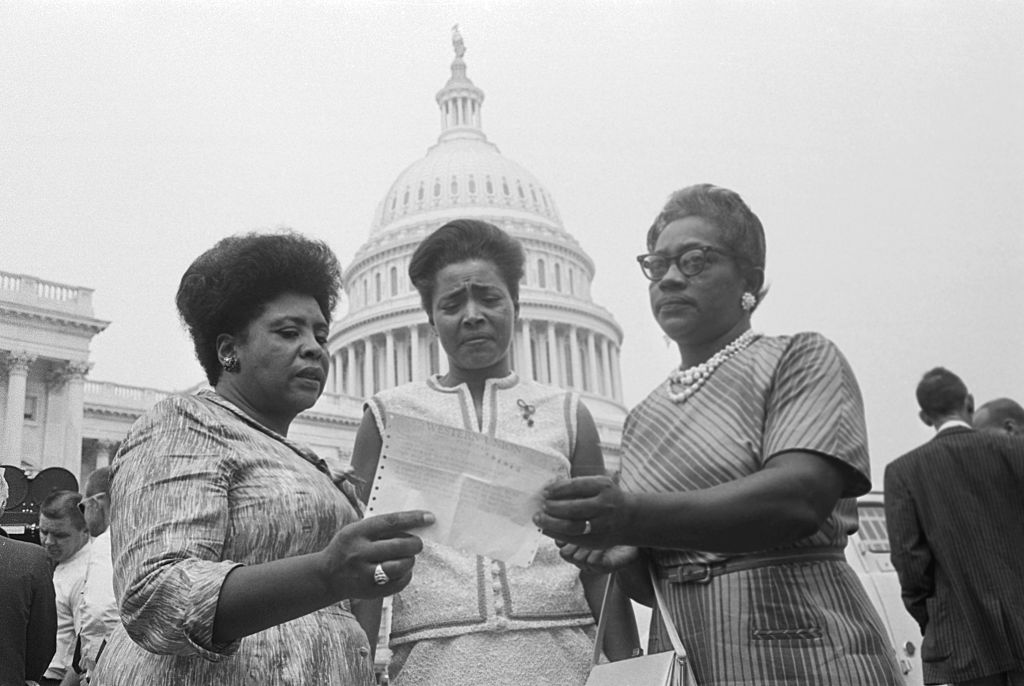
The House of Representatives met on Aug. 17, 1965, to affirm the seating of its Mississippi members, as Civil Rights demonstrators massed in silent support of their claim that the State’s elections were illegal because blacks were barred from the polls. Three members of the Mississippi Freedom Democratic Party’s contestants for the state’s five seats hold a telegram from Speaker John McCormick granting them permission to take seats on the House floor during the debate. They are, left to right: Fannie Lou Hamer, Victoria Gray, and Annie Devine. | Source: Bettmann / Getty
Challenging the status quo
The rally in Harlem was organized to support the political party that Hamer co-founded in 1964 as part of Freedom Summer, which saw hundreds of college students travel to Mississippi and other Southern states to help register Black people to vote.
The Mississippi Freedom Democratic Party was a racially integrated alternative to the state’s segregationist Democratic Party. Hamer was elected vice-chair of the party and also ran for a seat in the U.S. House of Representatives. In addition to Hamer’s congressional campaign, one of her party’s main goals was to block the seating of the state’s five pro-segregation U.S. congressmen.
In 1964, less than 7% of the state’s Black population in Mississippi was registered to vote, despite the fact that nearly 40% of the state’s population was Black.
LBJ’s Southern problem
Hamer’s challenge of the segregated delegation couldn’t have come at a worse time for President Lyndon Johnson.
Locked at the time in a reelection campaign against right-wing conservative Barry Goldwater, Johnson feared losing Southern Democratic politicians and voters in the upcoming presidential election.
The fight in Mississippi erupted on the national stage when television networks broadcast Hamer’s Aug. 22, 1964, testimony before the Democratic Convention Credentials Committee, which determined who was qualified to serve as a state delegate. In her bid to get the committee to recognize her political party, Hamer talked about the second-class, often violent, treatment afforded Black people.
“All of this is on account of we want to register, to become first-class citizens,” she said.
To prevent further testimony from Hamer that would further incense Southern Democrats, Johnson immediately held an impromptu press conference that would divert network television attention away from Hamer.
Despite Johnson’s tactics, Hamer’s story still spread throughout the nation in part because of a series of rallies held in Northern cities, including the one in Harlem.
“The truth is the only thing going to free us,” Hamer said during the speech in Harlem. “When I was testifying before the Credentials Committee, I was cut off because they hate to see what they been knowing all the time, and that’s the truth.”
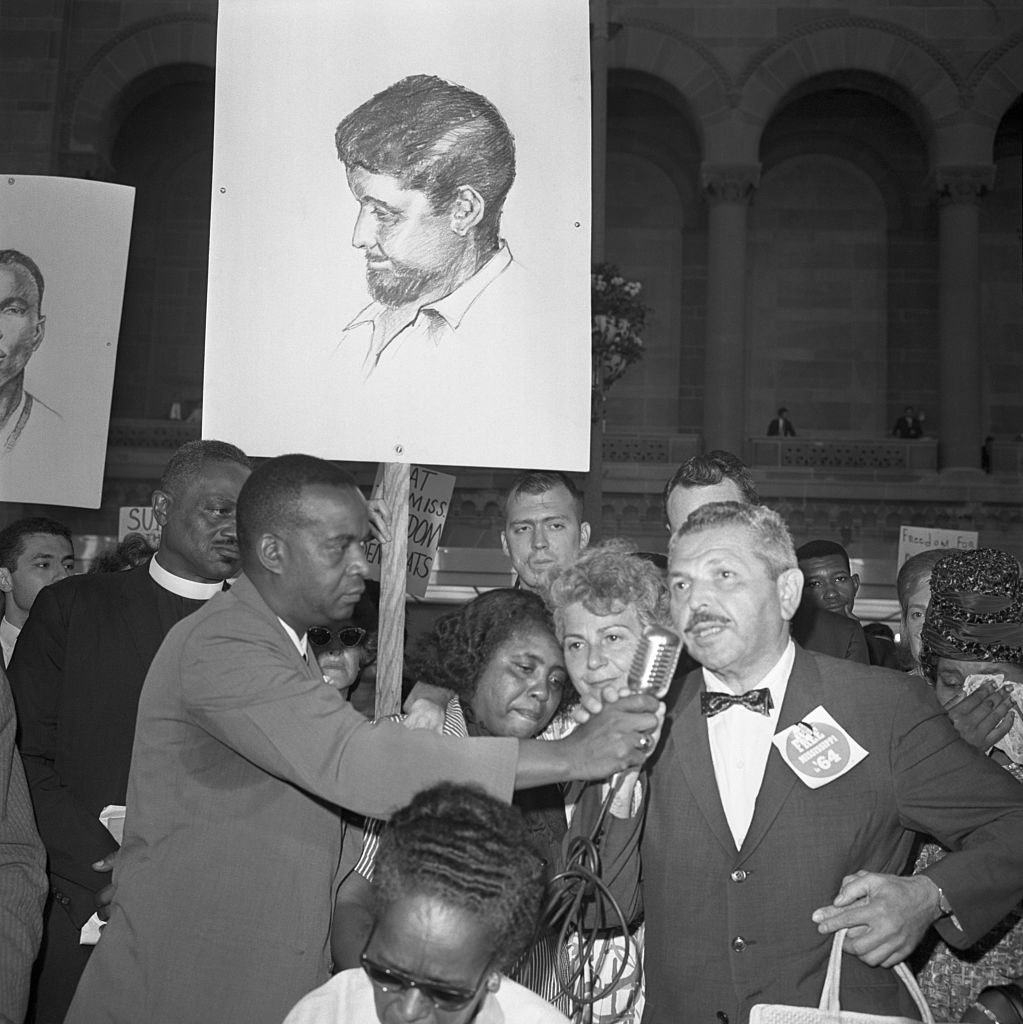
The protest outside of the convention hall over the seating of Mississippi delegates. Source: Bettmann / Getty
Sick and tired
Born on Oct. 6, 1917, in Montgomery County, Mississippi, Hamer was the 20th and last child of sharecroppers Lou Ella and James Townsend. She began picking cotton at the age of 6, and she would be forced to leave school shortly afterward to help her family eke out a living.
“We would work 10 and 11 hours a day for three lousy dollars,” Hamer once said.
In 1961, while undergoing surgery to remove a uterine tumor, Hamer received a hysterectomy by a white doctor without her consent. The forced sterilization was one of the things that prompted Hamer to join the Civil Rights Movement.
In the summer of 1962, Hamer attended her first meeting of the Student Non-Violent Coordinating Committee, a civil rights group of mostly Black college students who organized nonviolent protests against racial segregation and provided voter registration training. On Aug. 31, 1962, Hamer and 17 others decided to put their training to use by trying to register to vote at the Indianola, Mississippi, courthouse.
Of the 18 people, 16 were not allowed to take the test required for voter registration. Only Hamer and one other were allowed to take it – and both failed. These literacy tests consisted of reading and interpreting portions of the state constitution, such as the one on habeas corpus, a constitutional right to protect a person against illegal imprisonment.
Dejected, the group was further harassed when local police stopped their bus and fined them $100 for an overblown charge that the bus was too yellow.
The insults and constant fear of violence were examples of day-to-day life for Black people in Mississippi, a story Hamer argued was tragic, unconstitutional and sadly all too well-known.
“And you can always hear this long sob story,” she said. “For 300 years, we’ve given them time. And I’ve been tired so long, now I am sick and tired of being sick and tired, and we want a change.”
Marlee Bunch, Staff K-12 Initiatives, Office of the Chancellor, University of Illinois at Urbana-Champaign
This article is republished from The Conversation under a Creative Commons license. Read the original article.
![]()
SEE ALSO:
Honoring The Contributions Of Black Women In The Fight For Social Justice
The Unique Challenges Faced By Black Women In The Fight For Equality












